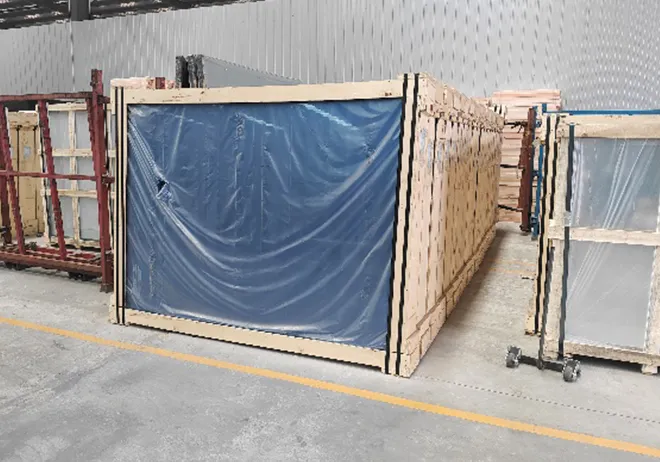Nov . 15, 2024 04:41 Back to list
blue float glass
The Elegance of Blue Float Glass A Design Perspective
Blue float glass has emerged as a striking material in contemporary architecture and design, captivating architects, designers, and homeowners alike with its unique aesthetic and functional attributes. This glass, characterized by its brilliant blue hue and reflective surface, not only enhances the visual appeal of buildings and interiors but also serves practical purposes in energy efficiency and environmental sustainability.
The Origin of Float Glass
Float glass, invented in the 1950s, is manufactured by floating molten glass on top of molten tin, resulting in a smooth, even surface. The introduction of colorants during this process allows for a variety of shades, with blue being particularly popular. The deep, rich blue color of blue float glass is reminiscent of the sky or the ocean, invoking a sense of calm and tranquility. This intrinsic connection to nature makes it an ideal choice for both commercial and residential applications.
Visual Impact and Versatility
One of the most appealing aspects of blue float glass is its versatility. It can be used in a range of applications, from large glass facades in modern office buildings to smaller installations like shower enclosures and decorative glass partitions in homes. The reflective quality of blue float glass allows buildings to interact with their surroundings; they can mirror the landscape, changing their appearance throughout the day as natural light alters.
In residential spaces, blue float glass can create a stunning focal point. For example, it can be used in windows that allow natural light to flood a room while simultaneously providing privacy. The calming blue tones can also enhance the mood of a space, making it feel more open and airy. In kitchens, back-painted or laminated blue glass can be used as a stylish backsplash, adding a pop of color and a contemporary flair.
blue float glass

Energy Efficiency and Sustainability
Beyond its aesthetic appeal, blue float glass offers significant energy efficiency benefits. The glass can be treated to enhance its thermal performance, reflecting heat during the summer months while allowing natural light to permeate. This quality helps reduce reliance on artificial lighting and climate control systems, leading to lower energy consumption and a smaller carbon footprint.
Moreover, blue float glass is often manufactured using environmentally friendly processes. Many glass producers adhere to stringent environmental standards, ensuring that the materials and processes used minimize waste and energy usage. This sustainability aspect adds to the appeal for eco-conscious architects and clients looking to reduce their environmental impact.
Psychological Effects
The color blue has been scientifically linked to various psychological effects, often associated with feelings of serenity, trust, and peace. In interior design, incorporating blue elements can enhance a space's ambiance and improve overall well-being. Blue float glass in a workspace can foster a calming atmosphere, potentially increasing productivity and creativity. Similarly, in healthcare environments, the use of blue tones can contribute to a tranquil setting, aiding in patient recovery.
Conclusion
In conclusion, blue float glass is more than just a visually appealing material; it is a versatile, energy-efficient choice that contributes to sustainable design practices. Its ability to evoke feelings of tranquility while providing practical benefits makes it a favored option among designers and architects. As we continue to seek innovative ways to blend aesthetics with functionality in our built environment, blue float glass stands out as a compelling solution that exemplifies the beauty of modern design. Whether used in grand architectural projects or subtle interior accents, it brings a unique charm that enriches spaces and enhances our everyday lives. As trends in architecture and design continue to evolve, blue float glass will undoubtedly remain a beloved choice for those looking to marry style with substance.
-
Safety and Style with Premium Laminated Glass Solutions
NewsJun.24,2025
-
Reinvents Security with Premium Wired Glass
NewsJun.24,2025
-
Premium Float Glass Line for Modern Architecture
NewsJun.24,2025
-
Low Emissivity Glass for Energy-Efficient Architecture
NewsJun.24,2025
-
High-Performance Insulated Glass Solutions for Modern Architecture
NewsJun.24,2025
-
Elevates Interior Style with Premium Silver Mirror
NewsJun.24,2025
Related PRODUCTS














